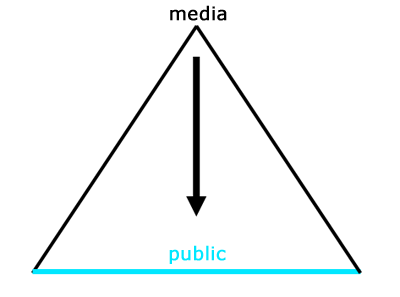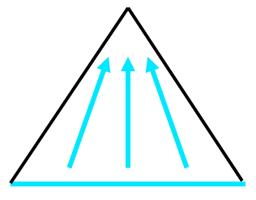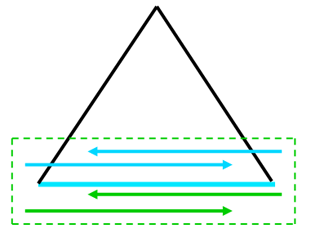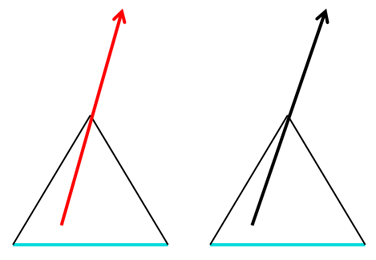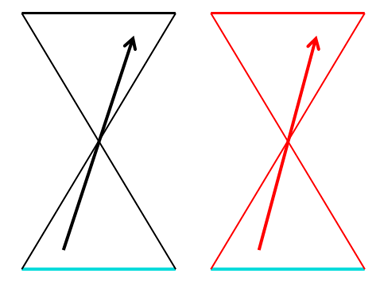01 | Analysis Of The Context Changes: Transition
October 28th, 2009 by bruno boutotSo, let’s lay the groundwork as fast as possible with the help of a few diagrams to build a common visual vocabulary from concepts we are all familiar with. #
Note: for the sake of speed, I am recycling diagrams from different presentations. Apologies for the inconsistencies. I’ll replace them later with cleaner ones. #
Graphical conventions:
In black, top of the triangle: the media
In blue, base of the triangle: the public
(consumers, readers, viewers, users)
Arrow: direction of communication #
figure 1: Traditional mass media #
Observations on figure 1 #
- This is the traditional model, proven and universal: a media (single point of origin) is sent to many people.
- Buzz words: ex cathedra, unidirectional, one to many, business to consumer (b2c).
- The main response expected from the public is binary, and can be measured easily: yes/no, I buy/I don’t buy.
figure 2: From the public to the media #
Observations on figure 2 #
- No surprise here: the Web provides faster means of feedback than previous tools as mail, fax or voice mail.
- The Web also puts media power in the hands of the users: on the Web, each user can send text, images, sound, or video.
- The big change is that media have to find ways not only to deal with this new influx of messages from readers but to use it to their advantage.
- Buzzwords: bidirectional, many to one, consumer to business (c2b), participation.
figure 3: Users between themselves #
Observations on figure 3 #
- This is new: the Web now allows members of the public to communicate between themselves in two distinct spaces:
- either within the media (blue) or
- outside of the media (green).
- At the same time, the Web offers to the media an opportunity and a competition: the media can now host exchanges between their readers but it also offers to readers countless other places where they can have these exchanges. The Web is thus creating a huge pressure for the media to host their readers’ exchanges: if the media don’t do it, readers will exchange somewhere else.
- Buzzwords: omnidirectional, one to one, consumer to consumer (c2c).
a b #
figure 4 a and b: Hyperlinks take our readers away from the media #
Observations on figures 4 a and 4 b #
- Something historical happened when the media landed on the Web: clicking on an ad (red arrow) irrevocably broke the confine of the media and brought the user elsewhere.
- The content followed suite: by clicking on any link (black arrow), the user is brought somewhere else toward a source of content or additional content.
c d #
figure 4 c and d: Hyperlinks make our readers and us part of the whole Web #
Observations on figures 4 c and 4 d #
- End of an era: the cozy relationship field made of media + user (our triangle) doesn’t exist anymore on the Web.
- Each time a media allows a hyperlink to be posted on its web pages, whether it’s an ad or a content destination, it runs the risk to lose the reader: maybe they won’t come back.
- But it works both ways: each time any outside site gives a hyperlink toward a media, the media has a chance to keep a new reader: maybe they won’t leave.
- Media and users are now part of a huge interlinked universe where everything is one click away.
- On the Web, we can’t think of a media as an isolated product anymore: it’s now a hyperlinked product.
- A media is now in a constant flux of losing and gaining readers from a vast surrounding ecosystem.
